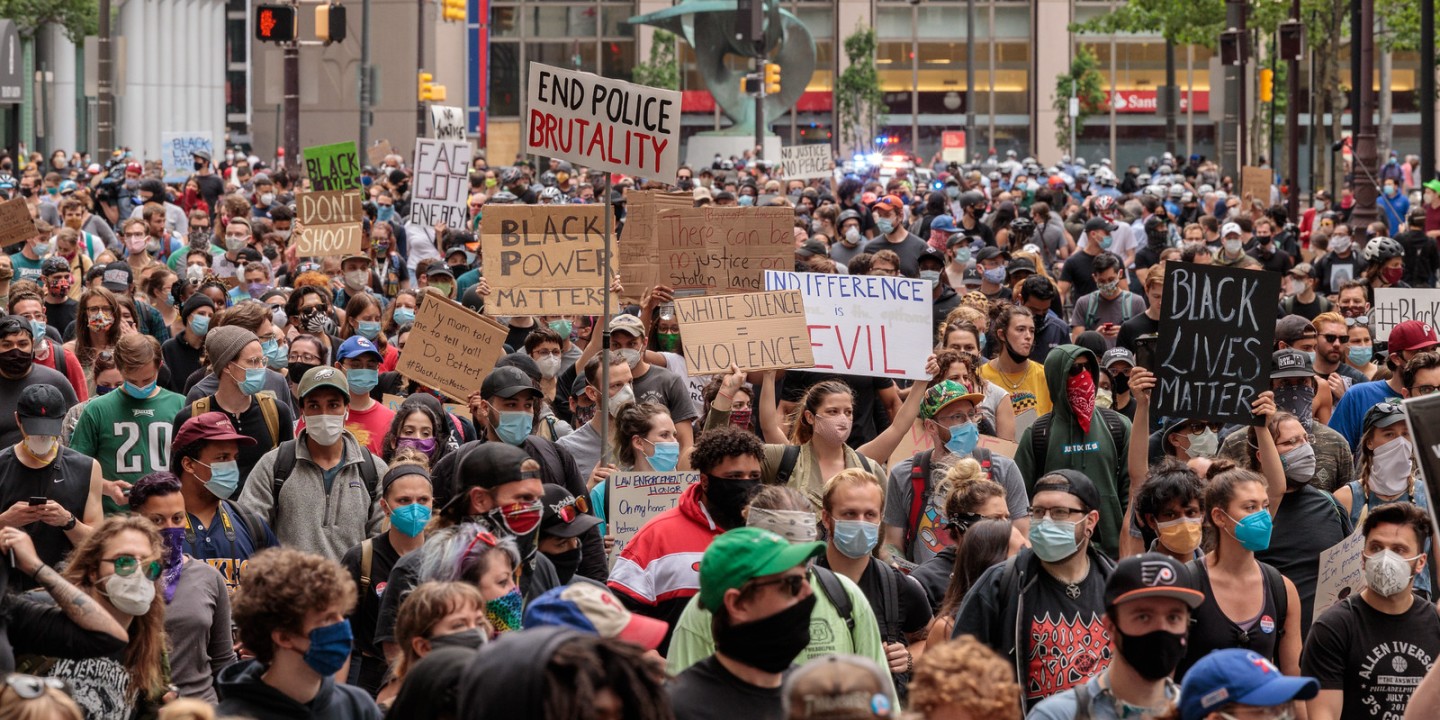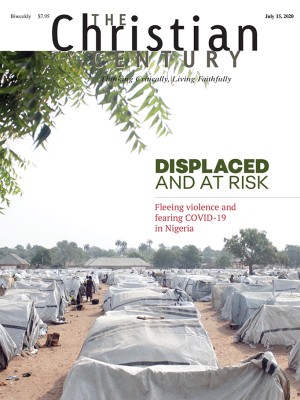The coronavirus lockdown was doomed before the mass protests began
Its demise came from the same system that killed George Floyd and Breonna Taylor.

The coronavirus lockdown is dead, and, to paraphrase Nietzsche, we have killed it. It ended with nationwide protests against police brutality following the killings of George Floyd and Breonna Taylor, nudged along by public health authorities who gave their blessing to the mass gatherings after months of insisting that social distance and staying home were a scientific and ethical necessity.
To some observers this was dangerous hypocrisy. Public health experts, wrote Thomas Chatterton Williams in the Guardian, “have hemorrhaged credibility and authority” by appearing to twist their scientific reasoning toward political ends, just as climate-science deniers are typically accused of doing. Other critics were less even-handed.
Read our latest issue or browse back issues.
But our attempts to restrain the spread of the virus were already winding down. The willingness of many Americans to go out in the street together to protest was not just a cause but an effect of the breakdown of the measures. The coronavirus crisis and the mass protests against systemic racism are different but, it turns out, deeply related.
In the early stages of the outbreak, Americans started curtailing their activities even before official business closures and stay-at-home orders were imposed by cities and states. These measures were themselves a last resort to which policymakers were forced by the preceding two months of denialism and dithering—first, as Ross Douthat tells it in a biting recent column, by some politicians and pundits who treated the virus as an ancillary threat to the danger posed by stigma and xenophobia, and then by the president, who wanted to prop up the stock market and manage public perceptions of the outbreak to his relative advantage.
There were modestly sized but widely covered protests against state restrictions in April, some of them funded and organized by Republican-aligned donor groups. But in general, Americans cooperated with local rules and demonstrated support in opinion polls. The stalwart consensus among public health experts no doubt helped guide public opinion. Very few people are eager to be furloughed from their job, manage their kids’ online schooling, and stay home all the time; to get people to do so requires public trust.
In hard-hit cities and regions, these measures had shown considerable power as early outbreaks receded sharply. And it did seem that they were swept away in a virtual instant as protests spread from Minneapolis after Floyd’s killing. An open letter signed by nearly 1,300 public health professionals, infectious disease professionals, and “community stakeholders” made the case explicitly: protesting racism with harm reduction measures in place is compatible with public health, while other gatherings should still be discouraged. One California county codified this guidance in its modified stay-at-home order, allowing for small social gatherings and “protests of up to 100 people.”
It is not hard to see why this narrowly modified guidance bothered some people. New York mayor Bill de Blasio sparked controversy in April by shutting down a Hasidic Jewish funeral procession. “Freedom of religion is not absolute,” Dallas-area clergy wrote in an op-ed urging continued restrictions, including those on houses of worship. The suddenly lenient stance toward public gatherings looked like special pleading for the exercise of one First Amendment right over another.
But even if it was ultimately harmful to endorse mass gatherings for the specific purpose of antiracist protest, those public health experts are no more than a minor player in the lockdown’s demise. In New York and California, where many media outlets are based, the virus was being somewhat effectively suppressed, and businesses were just starting to re-open. But in the many states where restrictions were loosened several weeks before, and in communities where suppression never happened, the story is different.
In Texas, where I live, re-opening began statewide at the end of April. Infections, which had plateaued at a fairly modest overall level (despite severe localized outbreaks related to meat packing plants and prisons), were already on the rise again before the protests began. And in predominantly black and Hispanic neighborhoods, where rates of uninsurance are high and many workers are “essential” and thus exposed to more risk throughout the shutdown, there seems never to have been a serious attempt to suppress the virus in the first place. Lawmakers reached out to our governor for help on this issue in April, and so far the state has done nothing.
Texas is hardly alone. The shutdowns were not undertaken for the benefit of low-income communities or communities of color. Instead, the virus was mostly cordoned off into those communities—presumably not by conscious intention but by the embedded patterns of racism that public health professionals describe as comprising a health threat of their own.
This was not news to protesters, many of whom have abundant experience with the virus. “They were living in impoverished areas. Couldn’t get proper treatment,” one Washington, DC, protester told a journalist about his friends who had died. “Lived in crowded conditions, so social distancing was hard to do. And they were still forced to go to work and be put in harm’s way.”
This is something the angry or befuddled responses to the protests during quarantine rules seemed to miss. The virus cares only about targets, not about politics, but politics is the way we decide who is a target and who gets to stay home. If our public health measures had really been designed to protect everyone, they may have been harder to simply ignore. But the crisis of legitimacy facing public health rules turns out to be just another version of the crisis of legitimacy facing law enforcement: too many people understand too well that the system isn’t for them. The cost of failure and breakdown is already priced in.
When I showed up to my first protest, in a suburb north of Dallas, I was relieved to see almost everyone in a mask. It was not a huge protest, but it was more people than I’d seen in person for months. We weren’t very good about maintaining six feet of distance, and the chanting and shouting had me thinking about droplets.
We can—and to some extent must—worry about and diminish our individual risk. But we can no more fight a pandemic one personal decision at a time than we can overcome racial inequality individually. Where the state gives up, the people have no choice but to work together. The death of the lockdown can and should be the birth of a new solidarity.
A version of this article appears in the print edition under the title “Why risk a protest?”





